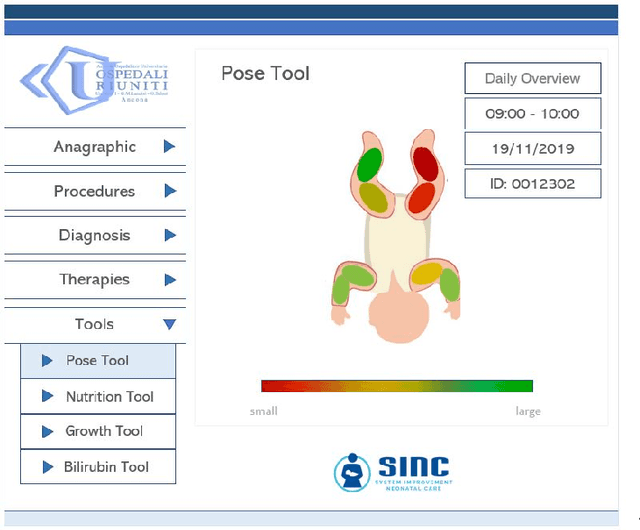Virgilio Carnielli
Preterm infants' pose estimation with spatio-temporal features
May 08, 2020



Abstract:Objective: Preterm infants' limb monitoring in neonatal intensive care units (NICUs) is of primary importance for assessing infants' health status and motor/cognitive development. Herein, we propose a new approach to preterm infants' limb pose estimation that features spatio-temporal information to detect and track limb joints from depth videos with high reliability. Methods: Limb-pose estimation is performed using a deep-learning framework consisting of a detection and a regression convolutional neural network (CNN) for rough and precise joint localization, respectively. The CNNs are implemented to encode connectivity in the temporal direction through 3D convolution. Assessment of the proposed framework is performed through a comprehensive study with sixteen depth videos acquired in the actual clinical practice from sixteen preterm infants (the babyPose dataset). Results: When applied to pose estimation, the median root mean squared distance, computed among all limbs, between the estimated and the ground-truth pose was 9.06 pixels, overcoming approaches based on spatial features only (11.27pixels). Conclusion: Results showed that the spatio-temporal features had a significant influence on the pose-estimation performance, especially in challenging cases (e.g., homogeneous image intensity). Significance: This paper significantly enhances the state of art in automatic assessment of preterm infants' health status by introducing the use of spatio-temporal features for limb detection and tracking, and by being the first study to use depth videos acquired in the actual clinical practice for limb-pose estimation. The babyPose dataset has been released as the first annotated dataset for infants' pose estimation.
 Add to Chrome
Add to Chrome Add to Firefox
Add to Firefox Add to Edge
Add to Edge